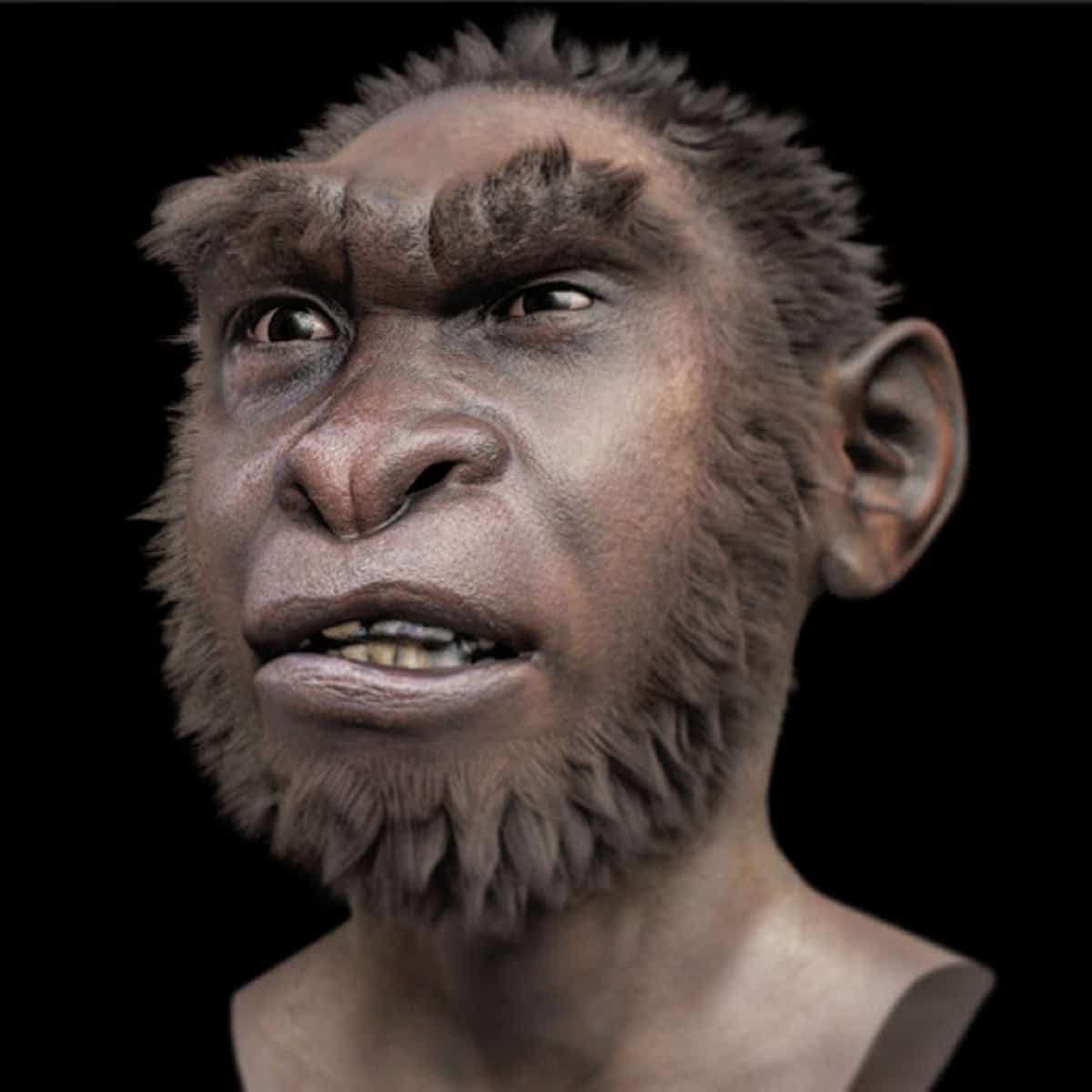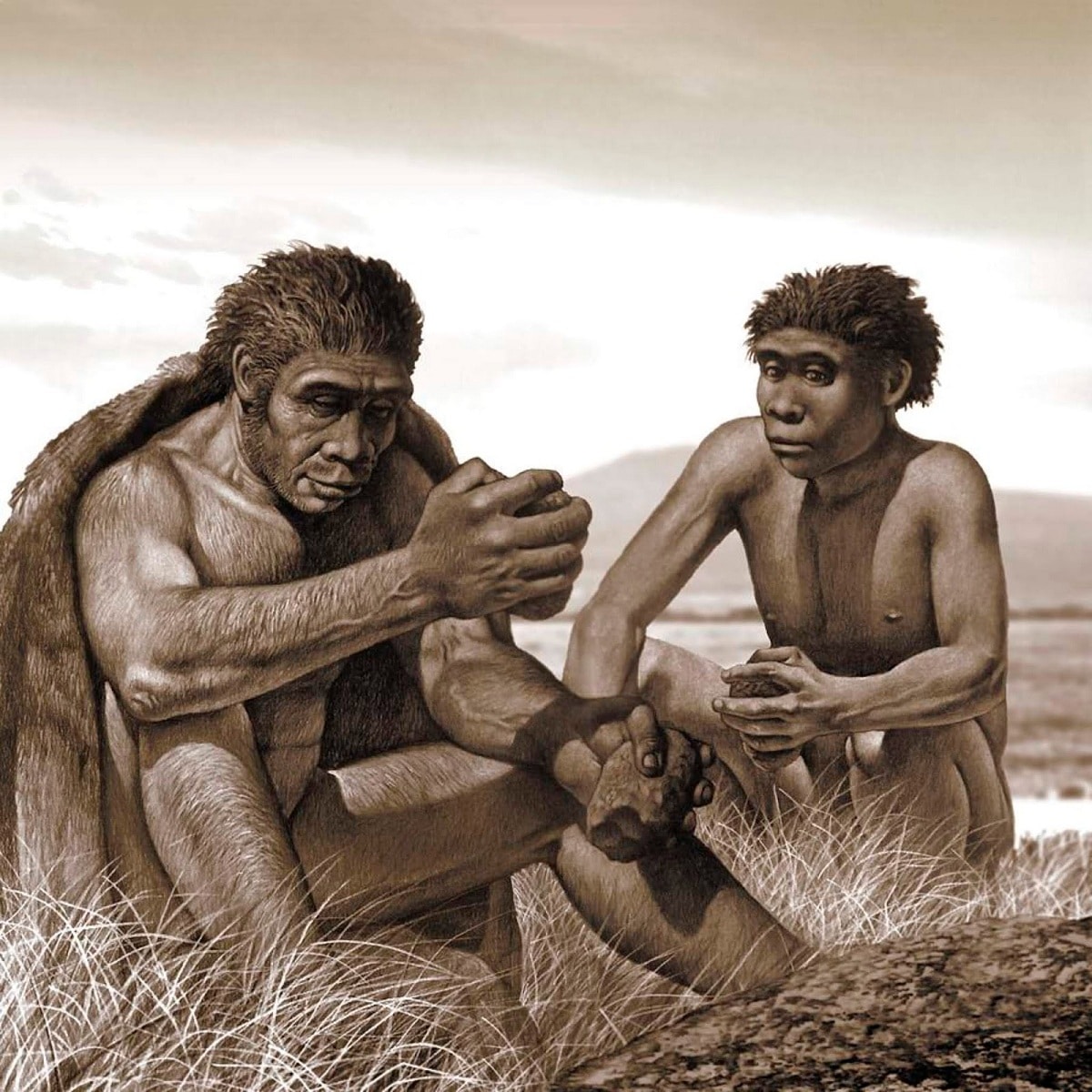
Within the ancestors of the human being we have the homo ergaster. It is a hominid that appeared on the African continent about 2 million years ago. Since the remains of these human beings were discovered, there has been a great controversy among experts. Some consider that this species together with the Homo erectus they are the same species, while other experts claim that they are different species.
In this article we are going to tell you all the characteristics, origin and curiosities of the homo ergaster.
Key features

The theory that prevails today is that this species of human was the direct ancestor of the Homo erectus. It is considered as the first hominid that could leave the African continent. The anatomy that this species has represents an evolutionary leap over other previous species. In this way, we highlight a height that could reach around 1.8 meters. As with other species, this one stands out especially for having a great cranial capacity. He had this ability far beyond that of his ancestors. For this reason, many authors consider that higher meat consumption explains the increase in this cranial capacity.
Translated, homo ergaster means working man. This species brought with it a great improvement in the elaboration of the tools and its utensils began to be more complex. By having better quality these utensils, it was possible to favor the hunting technique and the rest of other social activities.
The studies that have been carried out on this hominid mean that experts can also consider it as the successor of homo habilis. On the other hand, some authors do not fully agree with this and there is no absolute consensus. There are many paleoanthropologists who think that it could have been a single species. The earliest remains of several possibly female skulls are dated to approximately 1.75 million years old.
One of the most outstanding discoveries is that of the year 1984. A skeleton of an 11-year-old boy was unearthed and allowed the study of his anatomy. Among the features that stand out the most was his height. He was roughly 1.6 meters tall on the date of his death, so it could have reached 1.8 meters. The capacity of the skull was about 880 cubic centimeters and its body had a structure of all bones very similar to that of today's human being.
Dating and geographical scope of the homo ergaster

This hominid habit during the Middle Pleistocene epoch about 1.9 million years ago. The deposits that have been found reveal that their natural habitat where day and life developed was in Ethiopia, Tanzania, Kenya and Eritrea. In all this area the prevailing climate was very arid and the drought lasted for about 100.000 years.
Some experts agree that the homo ergaster it was the first hominid that could leave the African continent. Thanks to this migration, it was able to adapt to other areas of the planet in which other climatic characteristics, vegetation and fauna predominated. Before leaving the African continent, it expanded through the rest of this territory, making the leap to Middle East Asia between approximately 1.8 and 1.4 million years ago. It is known that it came to occupy areas of the Caucasus. Some remains have been found in Spain and Italy from approximately 1.4 million years ago.
There are many scientific experts who affirm that it quickly gave way to the Homo erectus as predecessor. Some scientists claim that they are the same species which varies in their geographic range. In the field of genetics we find diversity in genes depending on the environment. If a species develops in a different environment it is very likely to develop other different evolutionary characteristics. However, this does not mean that the species is different, but that it evolves due to another series of adaptations.
Physical characteristics of the homo ergaster

We are going to see what are the physical characteristics that this human being has. Its skull had a supraorbital visor. The area of the eyebrows was considerably smaller than that of the ancestors, although somewhat larger than that of the current human being. The weight that oscillated was between 52 and 68 kg and they were totally biped. His legs were elongated and there is no evidence of marked sexual dimorphism. This explains that there were no anatomical differences between men and women. Between them they could perform almost the same tasks regardless of sex.
The appearance of the face was marked by a more protruding nose and the jaw and teeth smaller than that of the Homo habilis. Brain growth was fueled by dietary changes, and his chest narrowed toward his shoulders, while his thigh bones were elongated.
Other physical aspects that produced an important change in the way of regulating the interior temperature. And it is that he could develop sweating and caused him to lose body hair in the medium and long term. Head hair appeared in the lungs developed further. It must be taken into account that this human being was increasingly in charge of carrying out more complex activities, so it needed more energy and oxygenation to be able to carry them out.
Breathing ceased to be solely oral and also began to breathe through the nose. This is how they were able to survive in the open savannah where increased mobility was essential in order to escape predators and hunt their prey.
Behavior
Many experts claim that among the behaviors of the homo ergaster there is no longer using trees in order to move. This is how he was able to completely abandon the arboreal condition of many of his ancestors and lived only on the ground. They are more stylized hominids and their anatomy has adapted to the environment in which they lived. Living in the savannah it was not very efficient to move from the trees. They moved in a way similar to the current human being.
If we go to the social aspect, they established complex relationships in communities. Oral language appeared although not all scientists agree with this.
I hope that with this information you can know more about the homo ergaster and their characteristics.